7 Types of Persian Cat
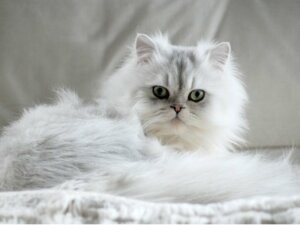

Reviewed and approved by the biologist Samuel Sanchez
Although in most people’s eyes, there’s only one type (with different colors or shades of hair), the reality is that there are 7 different types of Persian cat that are officially recognized. The cats that belong to this breed, one of the most loved among feline lovers, are characterized by their elegance, tenderness and character, as well as by their soft, long hair.
In this article, we’re going to tell you more about these 7 types of Persian cat and you’ll see that recognizing them isn’t at all complicated. You just have to take a good look at the shape of the head, the size of its body and the color of its attractive coat. Keep reading!
Characteristics of the Persian cat
These different types of Persian cat have more common characteristics than differences. In general, the kittens of this breed have a broad face, a flat nose, and large, round, very expressive eyes. Their ears are so small compared to their head that they even seem to get lost in their fur.
Speaking of hair, this is one of the most striking aspects of the breed. It’s soft, thick, and long, and requires special attention from the owner. In addition, looking after its coat is essential in order to avoid skin problems, knots, and tangles, and it must be brushed constantly.
Each breed of cat has a special character. In the case of Persian cats, these are characterized by demanding a lot of attention. They’re very dependent on their family and very sociable, and it’s common to see them looking for affection and attracting attention. Next, we’re going to give you more precise details about each of the types of Persian cat.
1. Silver & Golden
This type of Persian cat is one of the most recognized, as it has many differences with respect to the rest. Its main characteristic is in its fur, which can be seen in three shades: chinchilla, gold, and silver. However, it’s not entirely easy to identify these colors.
With the naked eye you can see a white cat with dark tips, especially on the face, limbs and tail. But when you approach it head-on, you’ll be able to observe its shades a lot easier. Their eyes can vary from deep green to blue-green.
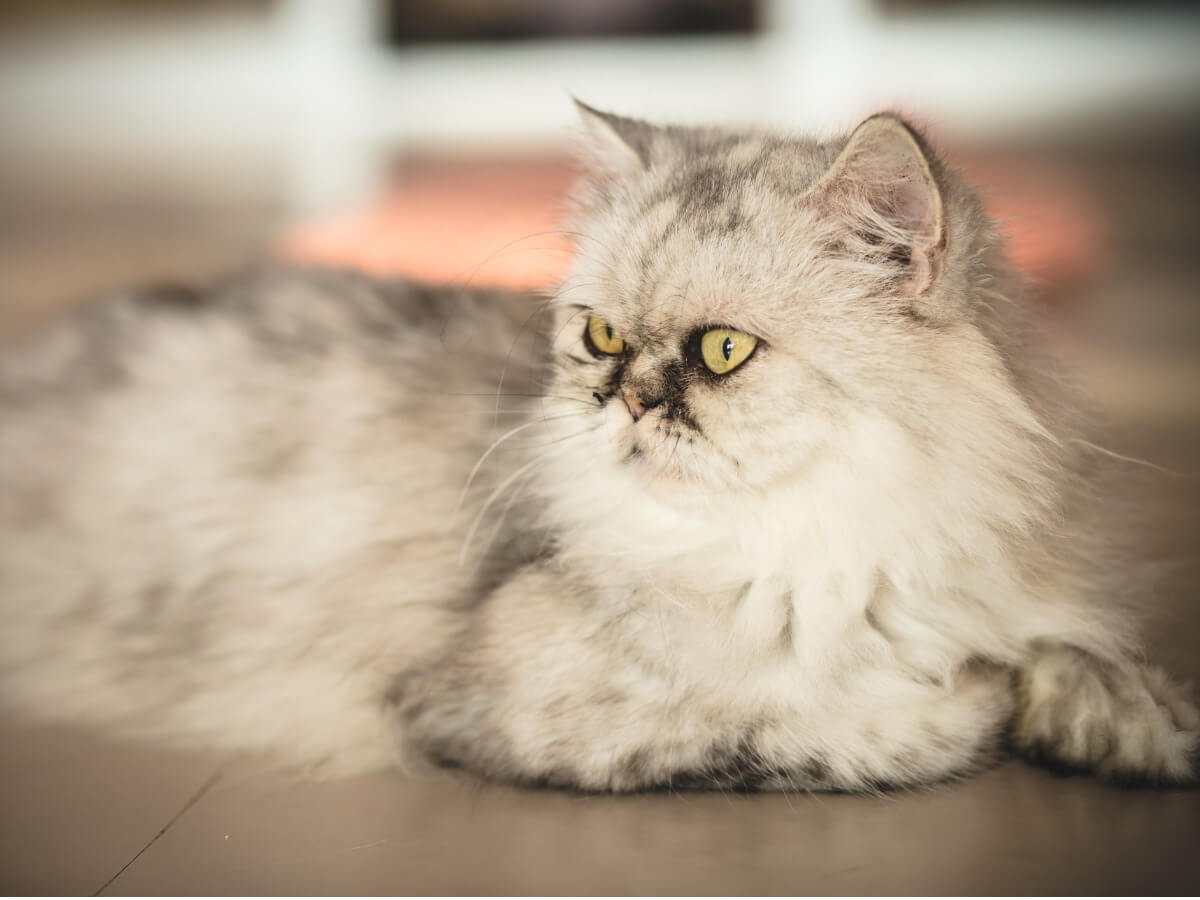
2. Tabby
The tabby is a very outgoing type of Persian cat. It has variations in hair patterns such as classic, brindle, and mackerel, which vary between silver, blue, chocolate, red, cream, cream cameo, and cameo. From among all that fur, their cute and bright bulging eyes stand out, which are usually hazel or green in color.
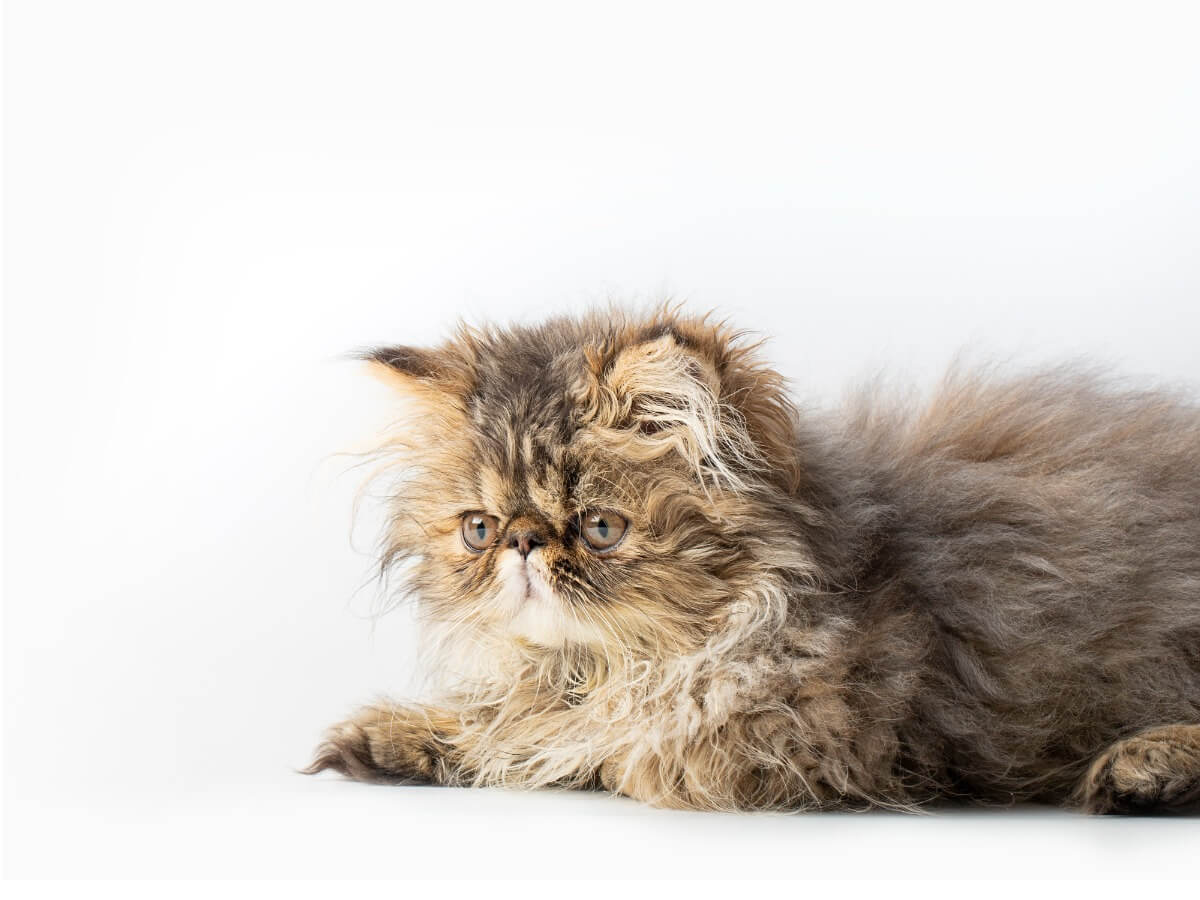
3. Bicolor
Bicolor Persian cats have a very cute appearance. Their signature colors add a lot to this look and include smoke and white, tabby to white, and calico. Thus, you can find bicolor Persian cats that combine shades of black, blue, red, lilac, chocolate, and cream, but always with white.
In general, this type of Persian cat tends to have a white torso, however, its limbs are a little darker, with a characteristic pattern on the head and usually have a maximum of two spots all over its body. Regardless of the combination of hair, their eyes are copper in color, except for the silver tabby, which have hazel or green eyes.
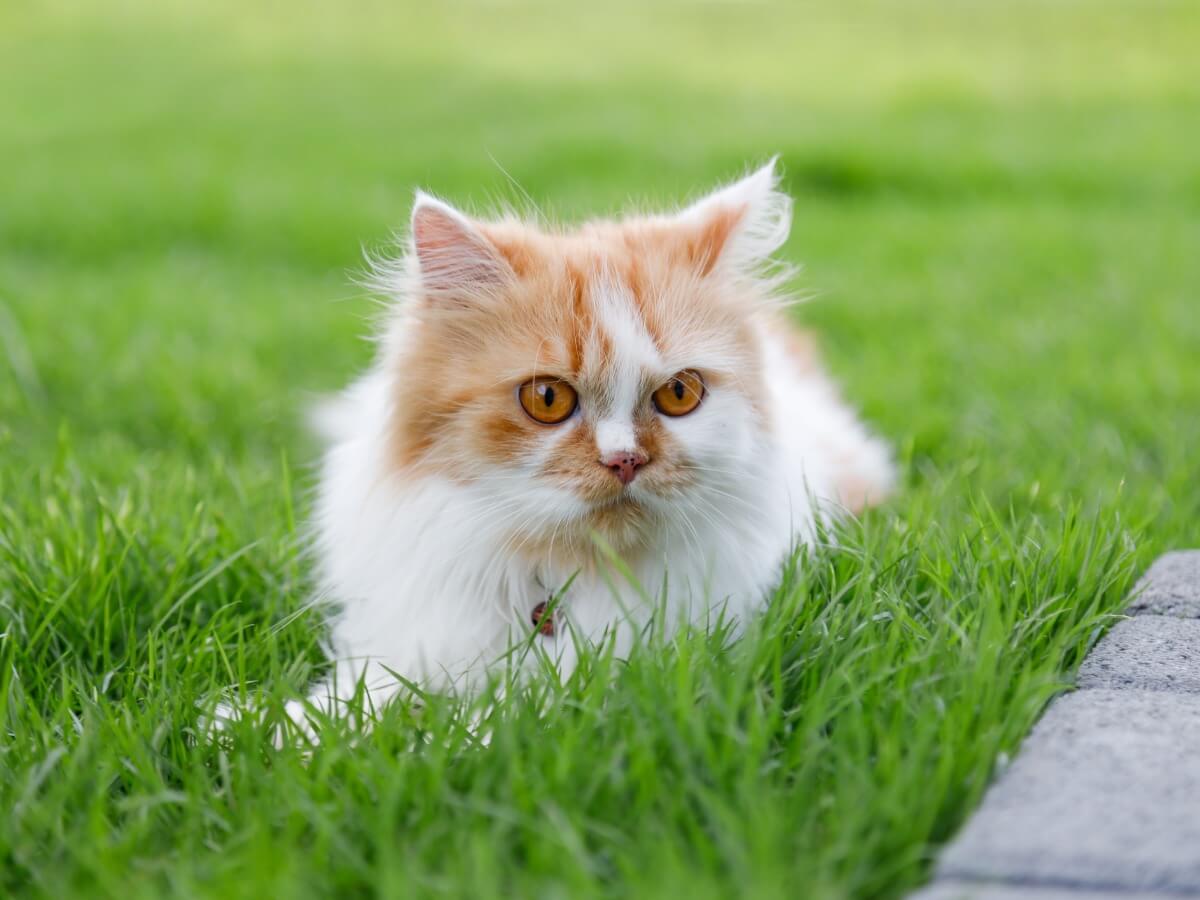
4. Solid-colored
Solid-colored Persian cats are easily identified because their fur has a unique color throughout their whole body, without any shading. The brown tone is the most common. Even so, we can see Persian cats of this type in shades such as white, black, chocolate, cream, lilac, blue, or red.
They all have copper-colored eyes and this combines perfectly with the color of their fur. The exception is the pristine white Persians, whose eyes vary between copper, deep blue, or a mix between these two colors. In fact, they can present heterochromia.
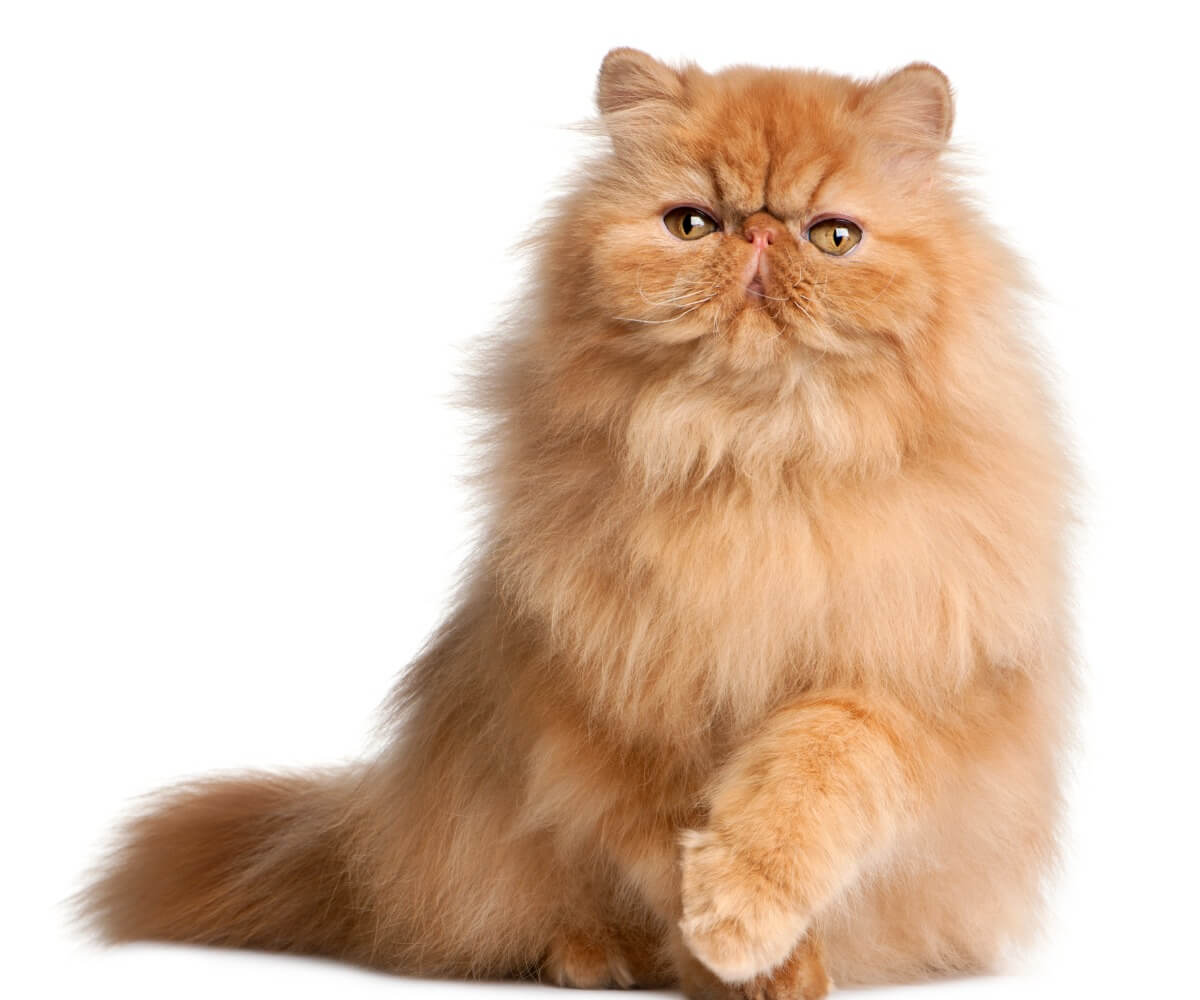
5. Smoke & shaded
Persian cats of the smoke and shaded type tend to deceive our eyes when they’re resting, as they appear to have a solid color. However, when they move, everything changes: the mantle opens up and shades like smoke or mist are noticeable.
In this movement you can see colors such as black, cream, red, blue, smoked cream, smoked tortoiseshell and smoked blue. When the cat is born, you can’t perceive this color combination, as it appears several weeks later. Contrary to the other types of Persian cat, these don’t have any variation in the tonality of their eyes. Without exception, they’re a coppery color.
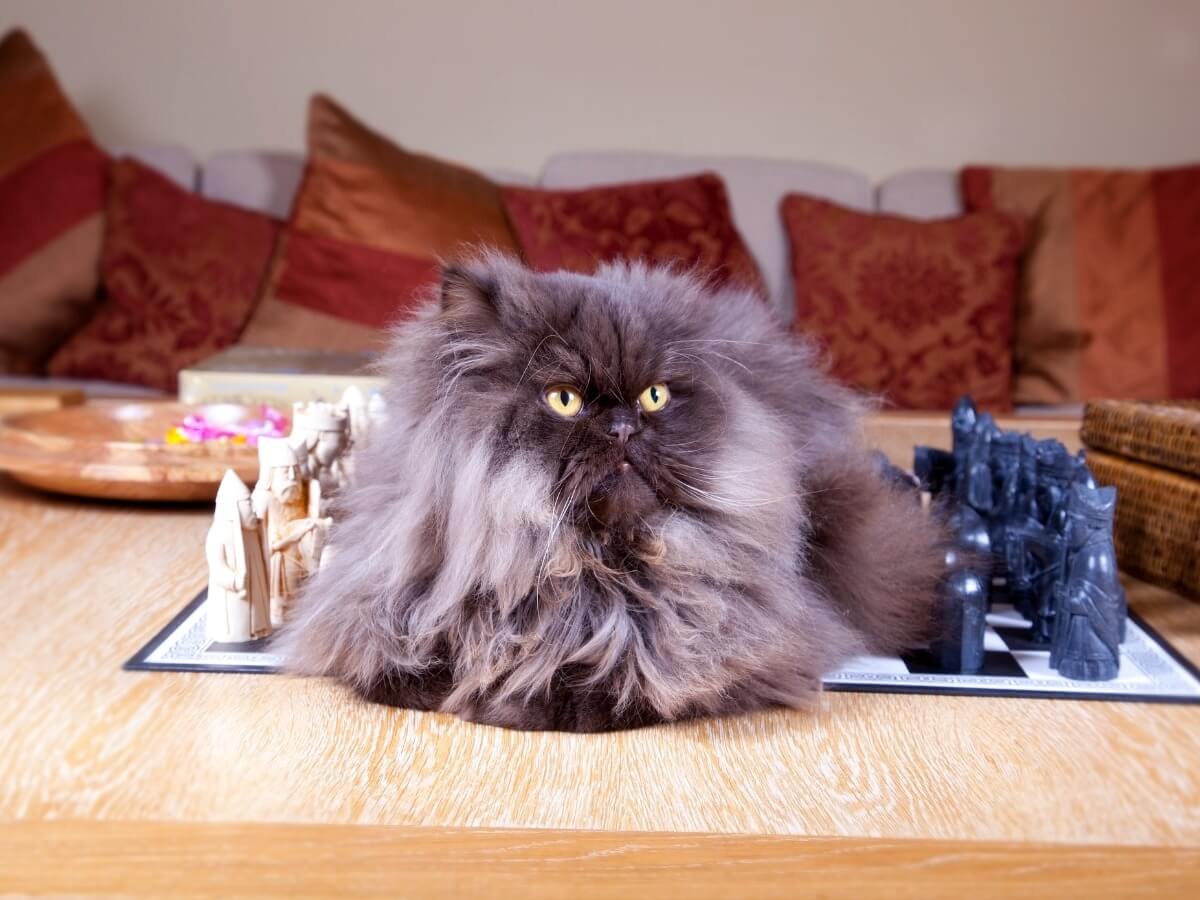
6. Particolor
If you love dark-looking cats, the particolor variety is the ideal option. There are 5 types of color in this category: chocolate shell, turtle shell, cream blue, cream lilac, and tortoiseshell.
The latter are characterized by having most of their fur black with brown and gold “ray” type spots all over their body and face. Their eyes are so bright that they stand out in the middle of their dark colors and are always a copper tone.
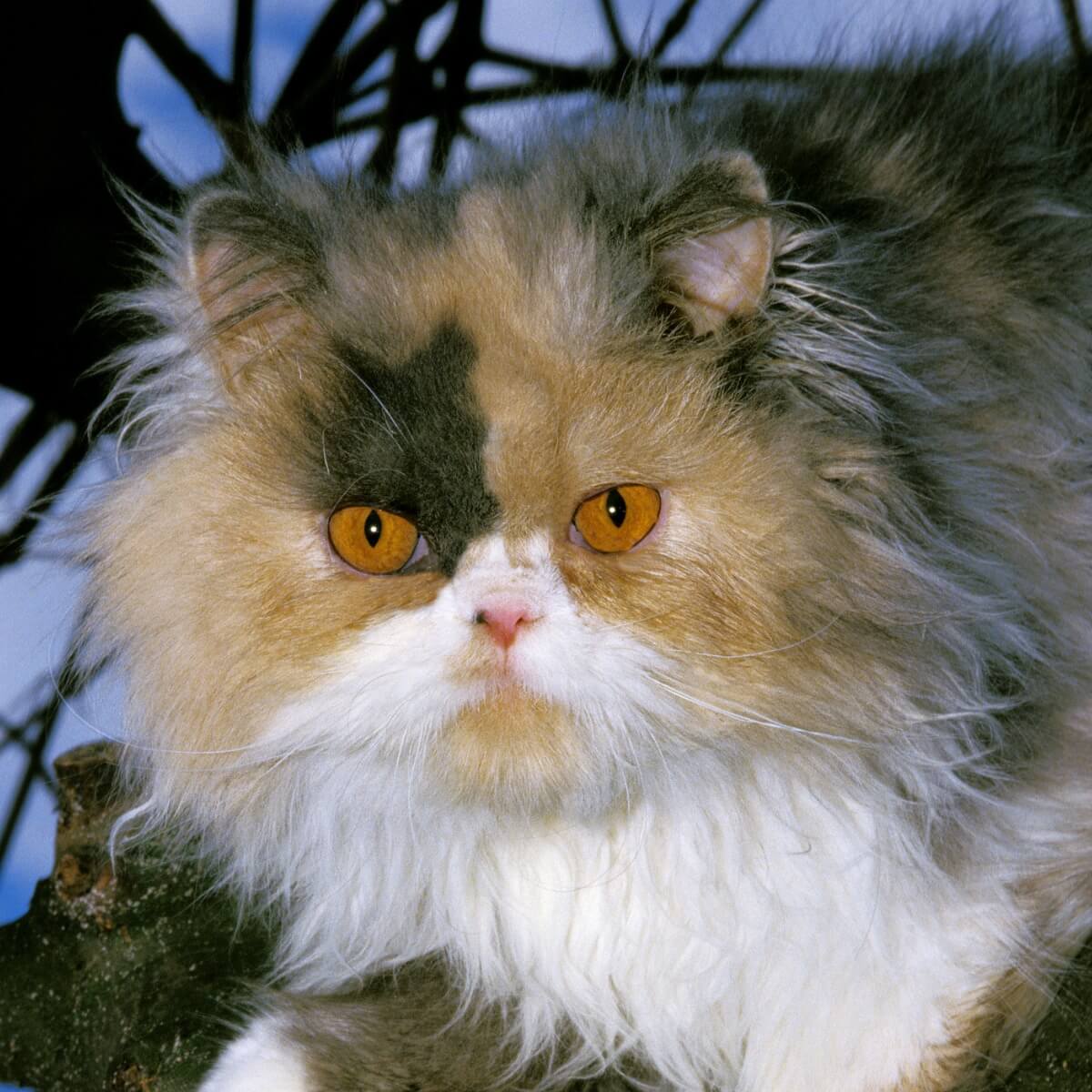
7. Himalayas
As we finish our list of the different types of Persian cat we find the Himalayas, perhaps the most popular in the world. It’s the result of a cross between a Persian cat and a Siamese, hence the characteristics of its fur.
These cats have a pattern on the mantle made up of different colors such as red, blue, gray, lilac, and chocolate, which appear on the limbs and facial mask. In the rest of the body, they’re white or beige. You’ll find that their eyes are always vivid blue, a characteristic more inherited by Siamese.

Caring for all types of Persian cat
Looking after your Persian cat is an entertaining and satisfying task for both parties. However, remember that their hair requires constant care and brushing, so little by little you’ll get used to doing it. In addition, it should be noted that these cats really like to be pampered in this way.
Brushing doesn’t only prevent knots and tangles from appearing, but it also takes care of their health by preventing the accumulation of hairballs in the stomach. These cats are fond of daily grooming, and so you’ll see them licking themselves very often. In addition, we’d like to tell you that this is a breed that needs cleaning and care regarding its sanitary litter, as its beautiful coat can store waste and bacteria.
Finally, whatever type of Persian cat you have, try to go to the vet, carry out the vaccination schedule and do the checkups and examinations that the professional requires. Be aware that studies indicate that Persian cats are genetically predisposed to developing polycystic kidney disease.
Although in most people’s eyes, there’s only one type (with different colors or shades of hair), the reality is that there are 7 different types of Persian cat that are officially recognized. The cats that belong to this breed, one of the most loved among feline lovers, are characterized by their elegance, tenderness and character, as well as by their soft, long hair.
In this article, we’re going to tell you more about these 7 types of Persian cat and you’ll see that recognizing them isn’t at all complicated. You just have to take a good look at the shape of the head, the size of its body and the color of its attractive coat. Keep reading!
Characteristics of the Persian cat
These different types of Persian cat have more common characteristics than differences. In general, the kittens of this breed have a broad face, a flat nose, and large, round, very expressive eyes. Their ears are so small compared to their head that they even seem to get lost in their fur.
Speaking of hair, this is one of the most striking aspects of the breed. It’s soft, thick, and long, and requires special attention from the owner. In addition, looking after its coat is essential in order to avoid skin problems, knots, and tangles, and it must be brushed constantly.
Each breed of cat has a special character. In the case of Persian cats, these are characterized by demanding a lot of attention. They’re very dependent on their family and very sociable, and it’s common to see them looking for affection and attracting attention. Next, we’re going to give you more precise details about each of the types of Persian cat.
1. Silver & Golden
This type of Persian cat is one of the most recognized, as it has many differences with respect to the rest. Its main characteristic is in its fur, which can be seen in three shades: chinchilla, gold, and silver. However, it’s not entirely easy to identify these colors.
With the naked eye you can see a white cat with dark tips, especially on the face, limbs and tail. But when you approach it head-on, you’ll be able to observe its shades a lot easier. Their eyes can vary from deep green to blue-green.

2. Tabby
The tabby is a very outgoing type of Persian cat. It has variations in hair patterns such as classic, brindle, and mackerel, which vary between silver, blue, chocolate, red, cream, cream cameo, and cameo. From among all that fur, their cute and bright bulging eyes stand out, which are usually hazel or green in color.

3. Bicolor
Bicolor Persian cats have a very cute appearance. Their signature colors add a lot to this look and include smoke and white, tabby to white, and calico. Thus, you can find bicolor Persian cats that combine shades of black, blue, red, lilac, chocolate, and cream, but always with white.
In general, this type of Persian cat tends to have a white torso, however, its limbs are a little darker, with a characteristic pattern on the head and usually have a maximum of two spots all over its body. Regardless of the combination of hair, their eyes are copper in color, except for the silver tabby, which have hazel or green eyes.

4. Solid-colored
Solid-colored Persian cats are easily identified because their fur has a unique color throughout their whole body, without any shading. The brown tone is the most common. Even so, we can see Persian cats of this type in shades such as white, black, chocolate, cream, lilac, blue, or red.
They all have copper-colored eyes and this combines perfectly with the color of their fur. The exception is the pristine white Persians, whose eyes vary between copper, deep blue, or a mix between these two colors. In fact, they can present heterochromia.

5. Smoke & shaded
Persian cats of the smoke and shaded type tend to deceive our eyes when they’re resting, as they appear to have a solid color. However, when they move, everything changes: the mantle opens up and shades like smoke or mist are noticeable.
In this movement you can see colors such as black, cream, red, blue, smoked cream, smoked tortoiseshell and smoked blue. When the cat is born, you can’t perceive this color combination, as it appears several weeks later. Contrary to the other types of Persian cat, these don’t have any variation in the tonality of their eyes. Without exception, they’re a coppery color.

6. Particolor
If you love dark-looking cats, the particolor variety is the ideal option. There are 5 types of color in this category: chocolate shell, turtle shell, cream blue, cream lilac, and tortoiseshell.
The latter are characterized by having most of their fur black with brown and gold “ray” type spots all over their body and face. Their eyes are so bright that they stand out in the middle of their dark colors and are always a copper tone.

7. Himalayas
As we finish our list of the different types of Persian cat we find the Himalayas, perhaps the most popular in the world. It’s the result of a cross between a Persian cat and a Siamese, hence the characteristics of its fur.
These cats have a pattern on the mantle made up of different colors such as red, blue, gray, lilac, and chocolate, which appear on the limbs and facial mask. In the rest of the body, they’re white or beige. You’ll find that their eyes are always vivid blue, a characteristic more inherited by Siamese.

Caring for all types of Persian cat
Looking after your Persian cat is an entertaining and satisfying task for both parties. However, remember that their hair requires constant care and brushing, so little by little you’ll get used to doing it. In addition, it should be noted that these cats really like to be pampered in this way.
Brushing doesn’t only prevent knots and tangles from appearing, but it also takes care of their health by preventing the accumulation of hairballs in the stomach. These cats are fond of daily grooming, and so you’ll see them licking themselves very often. In addition, we’d like to tell you that this is a breed that needs cleaning and care regarding its sanitary litter, as its beautiful coat can store waste and bacteria.
Finally, whatever type of Persian cat you have, try to go to the vet, carry out the vaccination schedule and do the checkups and examinations that the professional requires. Be aware that studies indicate that Persian cats are genetically predisposed to developing polycystic kidney disease.
All cited sources were thoroughly reviewed by our team to ensure their quality, reliability, currency, and validity. The bibliography of this article was considered reliable and of academic or scientific accuracy.
- Behrend, K. (2017). Gatos. Editorial Hispano Europea.
- Galleguillos Cruz, C. (2007). Estudio epidemiológico de casos de enfermedad renal poliquística en gatos Persa.
This text is provided for informational purposes only and does not replace consultation with a professional. If in doubt, consult your specialist.








